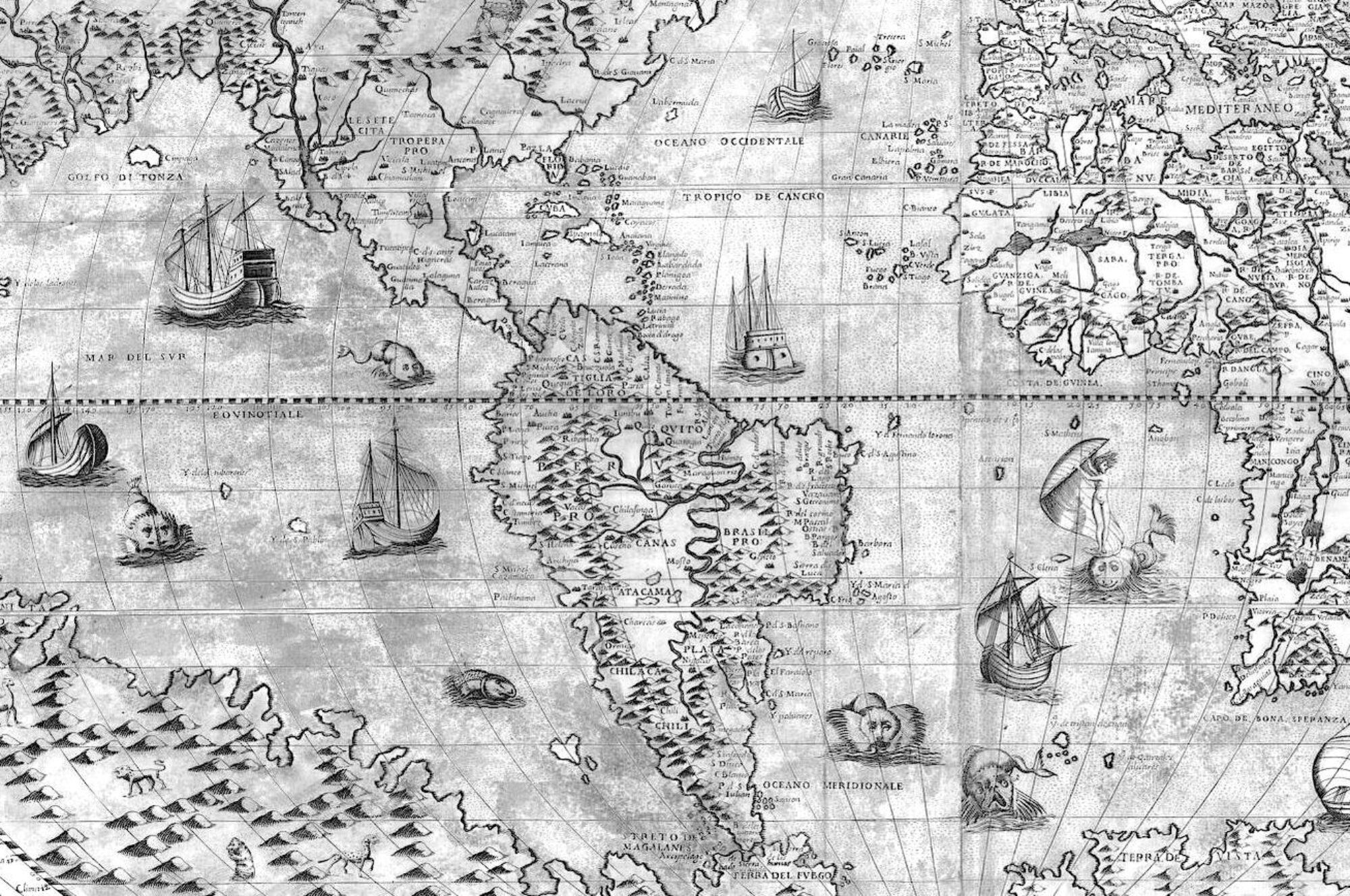The postwar period was a time when everyone believed himself to be a poet and a politician. Everyone thought he could, or rather should, write poetry about any and all subjects since for so many years the world had been silenced and paralyzed, reality being something stuck behind glass–vitreous, crystalline, mute, and immobile. Novelists and poets had been starved of words during the fascist years. So many had been forbidden to use words, and the few who’d been able to use them were forced to choose them very carefully from the slim pickings that remained. During fascism, poets found themselves expressing only an arid, shut-off, cryptic dream world. Now, once more, many words were in circulation and reality appeared to be at everyone’s fingertips. So those who had been starved dedicated themselves to harvesting the words with delight. And the harvest was ubiquitous because everyone wanted to take part in it. The result was a confused mixing up of the languages of poetry and politics. Reality revealed itself to be complex and enigmatic, as indecipherable and obscure as the world of dreams. And it revealed itself to still be behind glass–the illusion that the glass had been broken, ephemeral. Dejected and disheartened, many soon retreated, sank back into a bitter starvation and profound silence. The postwar period, then, was very sad and full of dejection after the joyful harvest of its early days. Many pulled away and isolated themselves again, either within their dream worlds or in whatever random job they’d taken in a hurry in order to earn a living, jobs that seemed insignificant and dreary after so much hullabaloo. In any case, everyone soon forgot that brief, illusory moment of shared existence. Certainly, for many years, no one worked at the job he’d planned on and trained for, everyone believing that they could and must do a thousand jobs all at once. And much time passed before everyone took back upon his shoulders his profession and accepted the burden, the exhaustion, and the loneliness of the daily grind, which is the only way we have of participating in each other’s lives, each of us lost and trapped in our own parallel solitude.
2018 Reading List
Books I’m excited to read this year:
Sheila Heti, Motherhood (coming in May 2018)
Heti is playful, restless, and does something different with every project. I loved How Should a Person Be. This is a “a fictional meditation on motherhood. The thirty-something narrator, surrounded by friends contemplating children, grapples with whether she wants to do the same.
Deborah Levy, The Cost of Living (coming in July 2018)
“A ‘working autobiography’ that comprises thoughtful dissections of life as a woman.
Morgan Jenkins, This Will Be My Undoing (just published)
“A collection of essays by Morgan Jerkins focused on ‘living at the intersection of black, female, and feminist in (white) America.’ Jerkins tackles topics from Rachel Dolezal to Sailor Moon and black female sexuality.”
(Quotes and recommendations above come from this fabulous list of 2018 books by Estelle Tang: http://www.elle.com/culture/books/g14486179/best-books-2018/)
Mary Beard, Women and Power: A Manifesto
“In this brilliant book, the classicist charts misogyny from ancient Greece and Rome to today, and issues a clarion call that it is not women but power that must change.”
https://www.theguardian.com/books/2017/nov/22/women-and-power-a-manifesto-by-mary-beard-review
Natalia Ginzburg, Family Lexicon (translated from Italian)
Autobiographical novel of her anti-Fascist family during the rise of Mussolini. Originally published 1963.
James Baldwin essays.
I have a book of his collected essays I’ve dipped in and out of, but I’d like to make a more concerted effort. He is so brilliant and prescient.
Nuestros más cercanos parientes
Anthology of Venezuelan short stories from the past 25 years. For my translation quest.
Sei Shonagon, The Pillow Book
A sort of journal from 10th century Japan, written by an aristocratic woman of the court, a document not only of life at the time, but also proto-prose poems and flash fiction.
Javier Marías, Corazón tan blanco
Marías is a gap in my reading. This is his celebrated 1997 novel.
Virginie Despentes, King-Kong Théorie
French former sex worker, punk-anarchist, writer and director of rape-revenge film Baise Moi ruminates/fulminates on pornograpy, prostitution, economics, power structures, etc.
Rebecca Solnit, The Mother of All Questions
Solnit’s most recent book, “further feminisms”.
María Belmonte, Peregrinos de la belleza
I picked this up randomly at a fantastic art/design bookstore in Madrid called Panta Rhei. A study of writers over time whose life was changed by a visit to the Mediterranean, including D.H. Lawrence, Henry Miller, Patrick Leigh Fremor, Lawrence Durrell.
Elsa Morante
Book to be determined. her name came up several times via last year via my reading of Alberto Moravia (her husband) and Elena Ferrante (who admires her writing). Book to be determined
Elizabeth Hardwick
Book to be determined. She’s in a generation of women writers and poets who were overlooked in favor of their male counterparts (e.g., Norman Mailer, J.D. Salinger, Truman Capote, Philip Roth, Robert Lowell (her husband), Bukowski, John Berryman). I would include her in the company of Mary McCarthy, Elizabeth Bishop. Don’t know much about her work, but interested in finding out.
NB: I realize this list skews heavily towards literary white ladies, and not on purpose… But these are the books that have crossed my path and made their way bedside. I do try to be more diverse in terms of who I follow and read online. I usually try to read at least one history book per year, haven’t found this one yet – maybe will pick up SPQR again (Mary Beard’s massive history of the Roman empire).
2017 Reading Round-Up!
I made it before the end of January! My annual round-up and entirely personal ranking of books I read last year, based on: level of language thrills, new thoughts, angst/joy/love when reading it; how long it will stay with me; how enthusiastically I would press it into your hands or buy a copy for a friend. I read 25 books (abandoned 5, see below). This list includes nonfiction and fiction only. (I did read poetry, but don’t include as I don’t read poetry cover-to-cover. It’s more like periodic scavenging to satisfy some spiritual craving I find in a poem or two. I also know too many poets to rank poetry books!):
Some quick stats on the 25 I finished:
Fiction (novels and short stories): 12
Graphic novels: 2
Nonfiction – memoirs, personal essays and interviews: 9
Nonfiction – history, biography: 2
I read authors from: USA, UK, Italy, South Africa, Pakistan, Canada, South Korea, France. Five in translation.
Books by women: 16 (62%)
Books by men: 10 (38%) (one got counted twice as it was a man interviewing a woman)
Years of publication span from 1954 to 2017
Despite the fact that I’ve always been a hungry reader of fiction, and am learning to write it myself, I was surprised to find my favorite books I read last year would be classified as nonfiction. I’ve been asking myself why that is – it’s partly a testament to the difficulty of writing fiction that will stick around with the reader. I think it also has to do with the times – I consume so much media, I’m requiring books to get straight to the point rather than taking the time to ponder narratives and metaphor (I’m sorry to admit). I could blame the internet, etc., but there are ways to preserve your concentration. My feeling in the “current climate” is that I want to know what a writer has learned: be direct, we don’t have much time!
I noticed my description of my favorites all included a physical reaction on my part. I think that’s what I’m chasing, an actual shift in my body, which I know is a tall order, and not anything you can categorize. There’s also the not-insignificant development that the memoir and essay genres have fully blossomed in the past 10 years. It’s also an exciting time in that regard.
The books I abandoned:
Her Body and Other Parties by Carmen Maria Machado – this debut collection of short stories got a lot of buzz last year and seemed right up my alley, but I couldn’t get into it. Read about half.
Partir by Lucía Baskaran – Part of my search for an untranslated book in Spanish that will inspire me to bring it into English. This felt very much like a semi-autobiographical first novel. I wasn’t too interested in what happened and put it down – it sounded like a journal (young woman having doubts about her current relationship, alternates with the telling of her move to Madrid to study acting). Read about half.
La acústica de los iglús by Almudena Sánchez – See above. Highly recommended by a Madrid bookseller. A talented young writer, slim collection of short stories. Surrealist, sad. I read about half of it.
Corazón tan blanco by Javier Marías – I was enjoying this well enough. Not sure why I set it aside, will give another chance. I read about a third.
The Third Sex – A non-fiction book about transgender culture in Thailand, written by a UK professor who lived with a transgender performer and her family for a year. I got about halfway through and must have lost interest. It’s an interesting world, but I wasn’t keen on the writing style (a bit corny).
Without further ado, my 2017 books, with apologies for any typos, and for inconsistent graphics:
2017 Reading Round-Up: Top 5
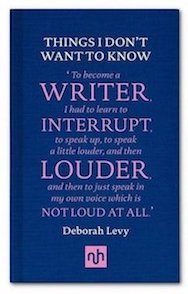
1. Things I Don’t Want to Know by Deborah Levy (Notting Hill Books, 2013)
I don’t know why more people haven’t read this book. It’s the kind of book avid lady readers should be raving about to each other and reading reviews of in Electric Lit and the New Yorker to see what other smart women think of it. But no, it’s actually even hard to find in the U.S., and I haven’t talked to anyone who’s read it. (She’s much better known in the UK/EU. I picked up it up in a fantastic bookstore in Galway.) I read this slim book in one afternoon – it’s a long essay commissioned in response to Orwell’s own short essay, “Why I Write.” Levy’s work touches on the first taste and shock of injustice experienced in childhood (in apartheid South Africa, masterfully from a child’s point of view in all its complexity), the experience of motherhood post 1970s feminism, travel and becoming someone else while “away”, risk-taking, the desire to write, figuring out how to write as a woman. It made me cry in a deep and satisfying way (on a bus to Dublin, no less!) that was a relief.

2. Frantumaglia: A Writer’s Journey by Elena Ferrante, trans. Ann Goldstein (Europa Editions, 2016)
These interviews and essays gave me that Emily Dickinson physical feeling of having the top of my head taken off, in particular the one that gives the collection its title. (“Frantumaglia” is Ferrante’s mother’s Neapolitan word for the mass of experiences and feelings that overwhelms and fogs the mind at times, the raw, wet stuff that writing is shaped from… I think). Particularly striking: her thoughts on the Dido myth and its relationship to women’s writing (Carthage originally intended as a city built on love); her mother’s work as a seamstress, how the dresses she made were and were not her; her exploration of her childhood violent wishes and feelings; the shifts in her motivations for remaining anonymous over time; thoughts on writing itself, what it means to be truthful when writing fiction.

3. Slow Days, Fast Company: The World, the Flesh and L.A. by Eve Babitz (NYRB Classics, 2016 (reissue), originally published 1977)
Essays on 1970s L.A. by the anti-Joan Didion, voluptuous and exuberant Eve Babitz, born a Hollywood insider. She is also witty, erudite and snobbish in her own way, as she gives accounts of quaalude-fueled threesomes, and ending up in the most unexpected places, like a baseball game or San Bernardino, via her lovers. There are also her odes to other women, their talent and style, and her thoughtful takes on fame, addiction, and public image. Thank Goddess that NYRB brought her work back into print.
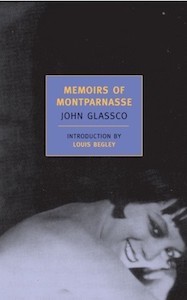
4. Memoirs of Montparnasse by John Glassco (NYRB Classics, 2007, originally published 1973) – John Glassco
Nineteen-year-old Canadian bisexual Glassco sets off for Paris in 1927 with his school pal, to become a poet and burn through his father’s money. Publisher and writer Robert McAlmon takes them under his sordid wing for a long bender in Luxembourg and the French Riviera. Glassco chats with Robert Desnos, sasses Gertrude Stein, judges beefy Hemingway, and writes a little bad Surrealist poetry along the way. There’s probably a lot of bending of fact, as this was written decades later, but it’s entertaining and wonderfully written. A fun, queer counterpoint to the hacky “Moonlight In Paris” view of Montparnasse in its golden age – the drag queen bars and lesbian literary circles, the roustabouts and pornographers, the would-be artists and dilettantes, who were also hanging around the cafes, never quite finding the time to work on their masterpieces…

5. Contempt by Alberto Moravia, trans. Angus Davidson (NYRB Classics, 2004, original 1954)
I felt so anxious reading this, it was a relief when it was over. The narrator just keeps fucking things up – it’s unbearable! Really masterful portrayal of an unreliable narrator. It reminded me of Lolita, a bit, in the way that the narrator is trying to elicit sympathy in his account, while unwittingly showing the ways in which he’s monstrous. There is also beautiful vivid imagery of the Italian coastline and Capri. I enjoyed the various characters’ ruminating on possible interpretations of The Odyssey, and how they informed the narrative.
2017 Reading Round-Up, #6-10
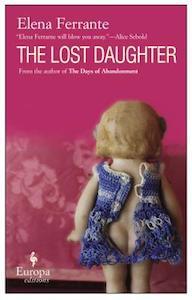
6. The Lost Daughter by Elena Ferrante, trans. Ann Goldstein (Europa Editions, 2008, original 2006)
Ferrante’s last short novel before embarking on the Neapolitan quartet. The seeds of that project are planted here – a woman trying to make sense of her life after her daughters have grown up and left home. There’s a tension throughout as she watches a Neapolitan family on the beach every day, relating to a woman playing with her daughter, and also sensing the violence that could erupt when the patriarch is around, a tension that increases as she becomes involved in a strange way. A visual theme emerges of dark insects marring a picture-perfect scene (a black moth in a seaside bedroom, a worm coming out of a doll’s mouth) that seem pointed and unflinching, like much of Ferrante’s work.
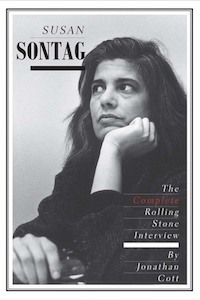
7. Susan Sontag: The Complete Rolling Stone Interview by Jonathan Cott (Yale University Press, 2013)
A full transcription of a multi-part interview Cott conducted with Sontag in 1978, which was only excerpted at the time. (It ends up stretching into a book of 130 pages!) Sontag seems fun, and funny, via this interview. She admits her own contradictions, because of her commitment to constant change. She talks about how rock and roll (Bill Haley and the Comets), the energy of it, made her change her life and find the one she actually wanted to live in the late 50s (leaving her marriage and the academic life behind). They toss around fascinating takes on stuff like: how and why the fragment speaks particularly to our time; what is a miracle; why ritual require silence; loving both “high” and “low” art; being fundamentally Californian or East Coast; how people want to drift towards (over)simplifying, and why complexity has to be kept alive, etc…
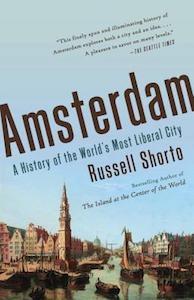
8. Amsterdam: A History of the World’s Most Liberal City by Russell Shorto (Vintage, 2013)
This was a fun history of the city – not comprehensive, as the title indicates, but rather exploring the roots of Amsterdam’s liberalism, in the widest sense of the word (including capitalist enterprise, for example). The author pipes up with his own opinions and as a character, in a way, in the history he’s telling. This personal authorial intervention isn’t too obnoxious, but I wouldn’t say is entirely necessary either.
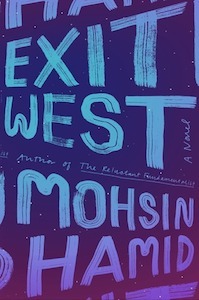
9. Exit West by Mohsin Hamid (Riverhead, 2017)
This novel was definitely written in response to the migrant crisis, and I liked how he pushed it into a speculative space of new possibility, rather than simply reflecting the depressing present. I had some minor quibbles – the epilogue, for example, which I had to pretend didn’t exist, the book ended so well otherwise. I also wondered at his very deliberate choice to keep his protagonists from being specifically Syrian or Muslim (although based on the details they might as well have been described as such). I guess this was underscore their “everyman-ness,” but in a way, it has the opposite effect. It would have been a strong statement to have “openly” Muslim characters in a novel with a largely Western readership, especially when every other location and character was grounded in specifics (named cities and nationalities). I remember a beautiful passage about what prayer meant, and had meant over time, to the more devout male character, for example, that made me understand Muslim prayer better. Anyway, a powerful novel, and I’m glad it’s gotten a lot of attention and people are reading it.
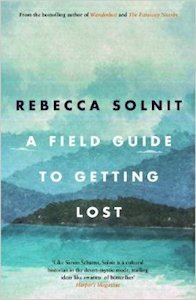
10. A Field Guide to Getting Lost by Rebecca Solnit (Canongate, 2005)
Essays on what it means to get lost, both purposefully (like Baudelaire in the city), and unintentionally, as a Spanish explorer separated from his group in pre-conquest America, and what you find when you’re found. Lost in a color, as Yves Klein, lost in another person. Solnit’s a phenomenal writer. I think she’s stronger when she writes about subjects other than herself (and she mostly doesn’t write about herself), perhaps because she maintains a final filter, a reticence to fully reveal her personal life. My favorite essay was on Cabeza de Vaca, and her own re-telling and re-contextualizing of what the “new world” was when the Spanish arrived, and how they missed it altogether. I love the way she is open to any subject, draws connections, and parallels. Her curiosity and love of history, art, anthropology, fiction, film, etc. etc. is invigorating. (She is also one of my favorite activist voices at the moment – everyone should follow her on FB.) I’ve read a lot of her work online, but this is the first book of hers I’ve read, and I’m excited there are many more to eat up.
2017 Reading Round-Up, #11-19
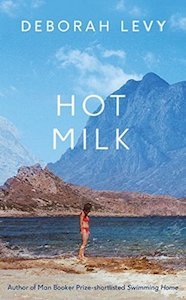
11. Hot Milk by Deborah Levy (Bloomsbury, 2016)
This was a book I appreciated more and more after I finished it. I think I resented the tidiness of the ending when I finished it (as I did with the other Levy novel I read, now that I think of it), but setting that aside, the atmosphere was established so vividly via the setting (a young woman and her hypochondriac mother seeking a cure from an eccentric doctor on the Spanish coast) and the young narrator’s perspective (a moment of transition, when everything is a question for her – her relationship with her family, her sexuality, her future). The novel is a collage of elements and tricks, unclassifiable, in a way. I was thrown by the surrealist touches, but they were also quite funny (the eccentric doctor and his clinic, for example), and I appreciate better in retrospect.

12. Troubling Love by Elena Ferrante, trans. Ann Goldstein (Europa Editions, 2006, original 1992)
Ferrante’s first novel. Claustrophobic and disturbing, a slim volume. The themes of the sex and violence coursing through Naples, motherhood, the abuse of women are here in a more dream-like, turgid form than in her later work.
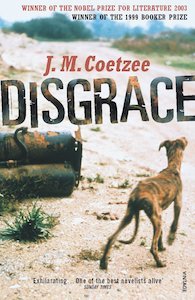
13. Disgrace by J.M. Coetzee (Penguin, 1999)
I still don’t know what to make of this novel. It’s absolutely bleak, a difficult read. And unexpectedly, a convincing plea against animal cruelty. It calls on the reader to ask ethical questions and come to their own moral conclusions or judgments of the protagonist, because the author never does. I’d like to talk to someone about it.
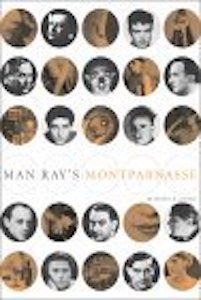
14. Man Ray’s Montparnasse by Herbert R. Lottman (Harry N. Abrams, 2001)
I was surprised to see this was published as recently as 2001. The writing style and approach feels a bit older. I would have guessed an original publication date in the 1960s (how he wrote about the women in the scene, for example, or his delicacy around more personal details). This is neither an academic book or a full biography of Man Ray, but only covers his Montparnasse years, around 1920-1941, when WWII drove foreigners out. In this account, Man Ray is depicted as a workhouse, a Brooklyn guy always working as a commercial photographer to support his art, and a natural monogamist, with fascinating women. While interested in the ideas and play of the Dadaists and Surrealists, he opted to stay out of the often petty internal fighting. A fascinating life, as he took everyone’s portrait at some point.
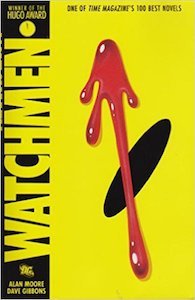
15. Watchmen, written by by Alan Moore, art by Dave Higgins (DC Comics, 1987)
I’m still behind the graphic novel canon, but at least I’ve read this essential volume. It holds up in our time – dark, apocalyptic, disillusioned in tone. The scenes of Doctor Manhattan on other planets, fed up with humanity, were my favorite. I also loved the integration of other sorts of writing – letters, news articles, old comics – as a way of giving information. The art is fantastic – detailed, masterful – it goes without saying.
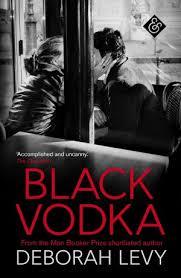
16. Black Vodka by Deborah Levy (And Other Stories, 2012)
I like that seduction was a current through these stories. The way that another person’s “otherness” seduces, whether they are from another culture, speak another language or are entirely “other” in their way of being. Sometimes what’s inscrutable is also what spells out the end of the relationship.Levy, as a British writer, is certainly seduced by Europe. So much of her writing is set on “the continent,” perceived through British eyes.
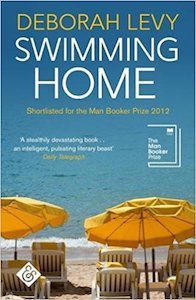
17. Swimming Home by Deborah Levy (And Other Stories, 2012)
In my year of Deborah Levy, this is probably my least favorite of the four books I read. The set-up was a bit too contrived (two English families summering in southern France are upended by the appearance of a young woman who shows up naked in the villa pool one day), the secondary characters too secondary, and the ending bit too easy. I know the aim in tone was for one of disjunction, an “off” feeling (in the dialogue, the uneven pacing), but this didn’t quite work for me, either. I do like how Levy explores sexual dynamics throughout her work, in particular from young women’s perspectives, and these were the parts that grabbed me in this novel; a scene, for example, of the deranged young woman viewed by the teenage daughter in the family.

18. The War of Art by Steven Pressfield (Black Irish Entertainment, 2002)
The only self-help category I read is “creativity” – I’ll admit it! This book is a good pep talk. I’m keeping it around for future consultation. My biggest takeaway was importing the “lunchpail mentality” you have towards paid work (go in even if it’s raining, even if you’re tired) to your own endeavors. Don’t bail out on yourself.
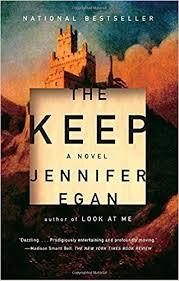
19. The Keep – Jennifer Egan (Anchor, 2006)
This was a fun contemporary take on the gothic novel, also a really clever frame narrative (I won’t describe to avoid spoilers). Egan inhabits male narrators really effectively – it’s a question always on my mind when reading (if a man is writing as a woman, and vice versa), and I stopped thinking about it in this book.
2017 Reading Round-Up, #20-25
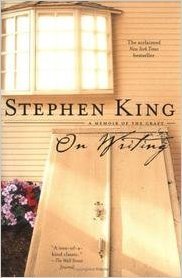
20. On Writing: A Memoir of the Craft by Stephen King (Pocket Books, 2001)
The first third or so of this book was King writing about his early life, and I wish it had all been about him, rather than then turning into his advice on writing, which is intended for beginning writers, I think (“avoid adverbs”). He’s an endearing character. His telling of recovering after being hit by a truck was also compelling. I read a lot of books by King in high school and admire his imagination and the way his inventions have influenced (and continue to influence) our own fears and metaphors (murder clowns, telekinetic teens, haunted hotels, etc), but I can’t say I particularly would want to write like him when it comes down to matters of style. The best advice I remember from this book is to write the first draft “with the door closed,” meaning, not to let anyone else in, to write for yourself in the first round.
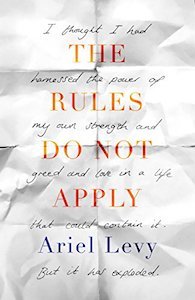
21. The Rules Do Not Apply by Ariel Levy (Hachette, 2017)
A memoir of Levy’s life falling apart – losing her unborn baby, partner and house within a short period of time – and what led her to that point. The book was in part inspired by her devastating and beautiful essay that appeared in the New Yorker, “Thanksgiving in Mongolia.” And maybe she said it all in that essay. While this book provides a lot more context, it doesn’t particularly illuminate more. It was completely gripping, true, (I read it in an afternoon), but I think the rush to get a book out into the world based on the success of the essay forced Levy into a narrative (perhaps by an editor, or perhaps a magazine-reporting approach to memoir), trying to shape the outlines of her life, from childhood into the present, into a tidy story that would be satisfying to a mass audience. The issues she faced and had to reckon with are so big and complicated, but the writing itself doesn’t manifest questions or grief happening. Instead it’s simply stated. I was also troubled with her casting her miscarriage as a sort of divine punishment for putting off motherhood, her unexamined privilege manifest throughout (surprising given the empathy and insight she shows in reporting on other people, particularly women), as well as her unexamined thoughts on her own bisexuality and perspective on gender (again, surprising given how much she writes about these subjects).

22. Fear of Flying – Erica Jong (Signet, 1974)
I think this is best read as a document of its time, i.e. 1973, otherwise it feels too much like a first book in need of a more rigorous editor. The narrator (thinly disguised Jong, her autobiography lines up pretty exactly with the novel) is delightfully unashamed about her sexual escapades, both good and disappointing, and it was refreshing to witness a female character so obsessed with herself and convinced she was interesting (although she wasn’t always). It’s the kind of gutsiness needed to ignore critics and finish things. On the other hand, there was a bit too much about her family, and the change in tone too drastic, or clumsily handled at times (e.g., veering from defining the “zipless fuck” to reckoning with being in Germany as a Jew not so long after the Holocaust).
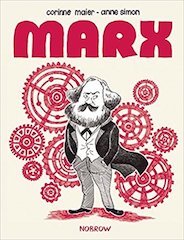
23. Marx – Corinne Maier (author) and Anne Simon (illustrator) (Norrow, 2014)
A slim, graphic novel biography of Karl Marx, for a YA audience (which I didn’t realize when I bought it). The illustrations are fun and witty, the text focused more on Marx’s life than his ideas and their effect on the world, which would have been more interesting, but admittedly that’s a tall order. I didn’t come away with any great insights, though I did learn that Marx was kicked out of a couple of countries.
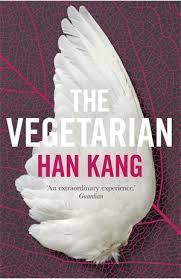
24. The Vegetarian by Han Kang, trans. Deborah Smith (Portobello Books, 2016)
A novella in three parts, translated from Korean, 2016 Booker prize winner. Eerie and unsettling. My favorite part was the description of the art painted on the protagonist’s body – a vivid depiction of flowers and plants painted on a human form and transformed via video – I could see it. That section also raised questions about boundaries in art. Ultimately, though, I didn’t think the author thread the needle between the three sections, and it rather fell off at the end, not in a way that was experimental, but (it seemed to me) because of the absence of a better resolution.
Side note, of interest in terms of literary translation: Controversy followed the Booker win, as the English version was found to be stylistically vastly different from the original Korean: http://www.latimes.com/books/jacketcopy/la-ca-jc-korean-translation-20170922-story.html
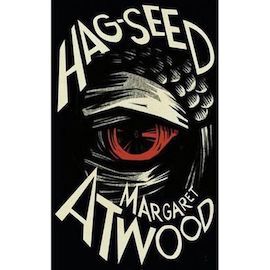
25. Hag-Seed by Margaret Atwood (Hogarth, 2016)
I’m surprised to see Atwood at the bottom of my list (The Handmaid’s Tale is a favorite), but this novel was all too tidy – there was no twist in the plotting. I can see it being useful for teaching The Tempest in a high school setting, and maybe this is the intention, as it’s part of a commissioned series of re-telling of Shakespeare plays. While the revenge set-up using a prison drama program as the setting is intriguing, and Atwood’s ideas for characterization and staging the play were marvelous, the second half didn’t live up to the first, just too pat.
I’m interested in understanding the fact that everything in life is turning into a show, draining the very concept of citizenship. I’m also struck by how the individual is more and more unhappily dedicated to becoming a character. And it frightens me that a classical effect of fiction–the suspension of disbelief–is becoming an instrument of political domination in the very heart of democracies. It seems to me that for now Berlusconi embodies, more completely than Reagan or Schwarzenegger, the change taking place in the democratic election of representatives.
2016 Books, Part III
My top 5 books read last year…
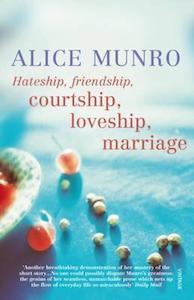
1. Hateship, Friendship, Courtship, Loveship, Marriage (2001) – Alice Munro
I’ve read a couple other Munro story collections, but this is the one that really drove home her brilliance. The way a moment between two people contains complexity and a dozen other stories; death and illness as a part of life, not the story itself.

2. One Hundred Demons (2002) – Lynda Barry
I read this in one setting. Memoir/autobiographical comics generated via an old Japanese method of drawing demons with pen and ink. Goofy, heartbreaking, authentic tales about dogs, the 2000 election, adolescence, betraying friends, doing acid, mean mothers…
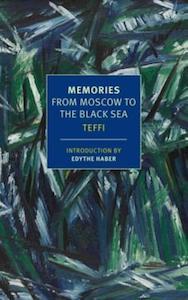
3. Memories: From Moscow to the Black Sea (1931, trans. 2016, NYRB edition) – Teffi (trans. Ann Marie Jackson)
The art of understatement. A Russian elite displaced during the Russian revolution. Witness to hunger, murder, animal fear, but told through a lens of distance and biting humor, with an eye for the feminine perspective, feminine survival methods.

4. Drawn Together (2012) – R. Crumb and Aline Kaminsky-Crumb
An anthology of all of the comics R. Crumb and his wife, Aline Kaminsky-Crumb have created together over their decades of partnership, from psychedelic-explicit nonsensical narratives in the 70s, to accounts of their semi-retired life in the south of France. The latter are my favorite – their frank/crude wisdom about aging, their lives, America vs. Europe, having money, sticking together, commercialism, etc.
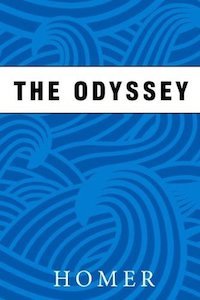
5. The Odyssey – Homer (trans. E.V. Rieu, 1945)
Weird and presumptuous to put one of the foundations of Western literature as #5 on a list of books, but that’s how I felt about it. This was a gap in my reading, though I already knew a lot about the journey, the monsters, and the various characters. The opening is cinematic, fantastic, though I was disappointed that the various monsters only took up a fraction of the book (the Cyclops episode was my favorite) and so much was devoted to Odysseus’ bloody revenge on Penelope’s suitors and his servants who helped them. Telemachus was also such a jerk to his mother. She was always weeping and retiring to her chamber and he telling her to be quiet.
2016 Books, Part II

6. The Complete Persepolis (Pantheon, 2007, originally pub 2000-2003) – Marjane Sartrapi, trans.
I liked how this wasn’t a straightforward narrative of building a new life abroad after the political and social upheaval in Iran. There were difficult times and beautiful times in both places for the author, and ultimately, a sense of dislocation that has to be reckoned with no matter where she is. The tempestuousness and sometimes-shitty oblivious behavior of youth is all there, which I also appreciated. I liked the simplicity of the art, how much she does with black. Her family members are most vivid, visually – chic mother, gentle father, dashing uncle, feisty grandmother.
Origin: American Book Centre in The Hague
Fate: On the keeper shelf
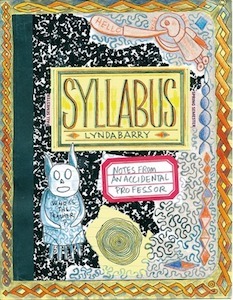
7. Syllabus: Notes from an Accidental Professor (2012?) – Lynda Barry
Second time reading this, one of my favorite books discovered last year. I enjoyed this book more visually this time, Barry’s monkeys, her renderings of herself as Chewbaca. The generosity of a real teacher comes through in the exercises here, the enthusiasm for sticking to something and the best wishes for a breakthrough in thinking, or style, or habits.
Origin: American Book centre in Amsterdam
Fate: On the “always keep” shelf
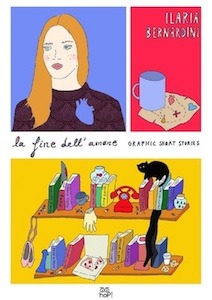
8. La fine dell’amore (2014) – Ed. Ilaria Bernardini
An anthology of 13 “graphic short stories” about the end of love. A big range, from sinister, to realistic, to funny, to dreamy and surrealistic. Strong enough visually that I could understand with my intermediate Italian. A beautiful collection. I’m also happy that I stumped Amazon.com with this pick! Only available on Italian websites. http://www.hopedizioni.com/la-fine-dellamore-graphic-short-stories/
Origin: A cool film-and-art-book store in Rome near Piazza Navona
Fate: On the “keeper” shelf
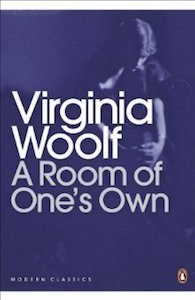
9. A Room of One’s Own (1929) – Virginia Woolf
I read this a long time ago in college. It made a big impression on my budding feminist self them, particularly the part about Shakespeare’s sister. This time I was struck by the depth and prescience of Woolf’s analysis, for example, her thoughts on the rarity of reading dialogue between two women, written to a woman, the novelty of it (Bechdel test anyone?); also her centering the argument on economic autonomy – the recognition of her own privilege and how that afforded her the freedom of time and space to create. I was also struck by her ability to view women as a separate economic class and in that sense assess their poverty and unpaid work at the time – such revolutionary thinking at the time (and still is, depending who you’re talking to). Also a pleasure to read, with her wit and balanced, intricate sentences.
Origin: The uninspired English bookstore full of remaindered titles in Leiden
Fate: Somewhere in the apartment? Just an easily replaced cheap paperback edition, so I’m not concerned

10. A Place of Greater Safety (2006) – Hilary Mantel
Mantel’s MASSIVE fictionalized account of the French Revolution, from the point of view of the revolutionaries. The characters really came alive, but I confess it became a bit of a slog in the last 200 pages.
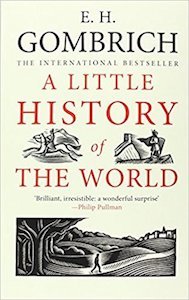
11. A Little History of the World (1935, trans. 2005) – Erich Gombrich
I think my whole feeling about this book would change with a change in the title to “A Little History of the West”. It’s intended for young readers, and it that sense it is refreshing and accessible, and comes from an art history perspective on European history, which always gives cause for hope.
